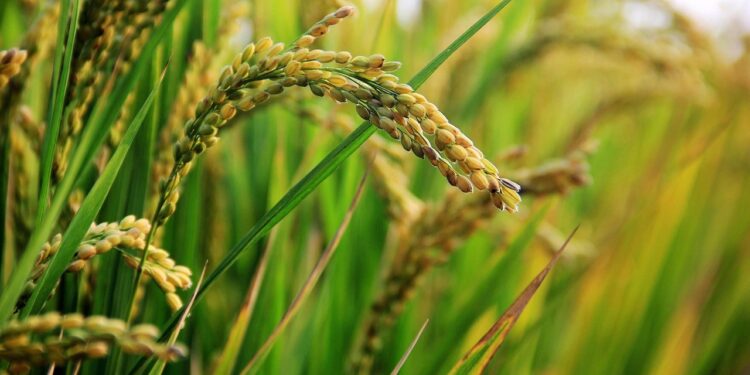Basmati rice is celebrated worldwide for its distinctive aroma, slender grains, and fluffy texture. Among its many varieties, extra long grain basmati rice stands out for its remarkable grain length and superior cooking qualities. This variety is prized by chefs and home cooks alike for its ability to enhance both the taste and presentation of a wide range of dishes.
Whether you’re preparing a fragrant biryani, a simple pilaf, or a gourmet meal, choosing extra long grain basmati rice can make all the difference in achieving authentic flavor and texture.
What Makes Extra Long Grain Basmati Rice Special?
The hallmark of extra long grain basmati rice is its impressive grain length. These grains are noticeably longer than regular basmati rice, often reaching lengths of 7 to 8 millimeters or more before cooking. Upon cooking, the grains elongate even further, sometimes doubling in length, while maintaining their slender shape and integrity.
This elongation is not just visually appealing but also adds to the texture, ensuring that the rice remains light, fluffy, and non-sticky. The unique combination of grain length and aroma sets extra long grain basmati rice apart from other rice varieties.
The Origin and Cultivation of Extra Long Grain Basmati Rice
Extra long grain basmati rice is traditionally cultivated in the fertile plains of the Indian subcontinent, particularly in regions such as Punjab, Haryana, and parts of Pakistan. The combination of rich soil, ideal climate, and traditional farming methods contributes to the exceptional quality of this rice.
The grains are typically aged for several months after harvest, a process that enhances their aroma and cooking properties. Aging helps reduce moisture content and intensifies the signature nutty fragrance that basmati rice is famous for.
Key Features of Extra Long Grain Basmati Rice
- Lengthy Grains: One of the most distinctive features is the grain length, which elongates significantly after cooking.
- Fragrant Aroma: Aging develops a rich, nutty, and floral aroma that enhances the sensory experience of dishes.
- Fluffy Texture: The grains cook to a soft yet firm texture, remaining separate and non-sticky.
- Versatility: Ideal for biryanis, pilafs, steamed rice, and even salads, making it a versatile choice for various cuisines.
- Nutritional Value: Provides a good source of complex carbohydrates and essential nutrients for a balanced diet.
Benefits of Cooking with Extra Long Grain Basmati Rice
Cooking with extra long grain basmati rice offers several advantages that contribute to a superior dining experience:
- Enhanced Presentation: The long, slender grains give dishes a visually striking appearance, making meals more inviting and elegant.
- Better Texture: Fluffy, separate grains add a pleasant mouthfeel and prevent the clumping common with lower-quality rice.
- Authentic Flavor: The natural aroma and taste complement spices and herbs, enriching the overall flavor profile of dishes.
- Healthier Option: Often naturally aged and minimally processed, this rice retains nutritional value and is a healthy carbohydrate source.
- Culinary Consistency: Reliable cooking results every time, making it easier for chefs and home cooks to plan meals.
Popular Dishes Featuring Extra Long Grain Basmati Rice
Extra long grain basmati rice is the preferred choice for many traditional and contemporary recipes, including:
- Biryani: Its aromatic grains soak up spices beautifully while maintaining their shape, making biryani visually and flavorfully appealing.
- Pulao: Lightly spiced pulaos benefit from the fluffy texture and aroma of extra long grain basmati rice.
- Jeera Rice: Cumin-flavored rice gets a fragrant boost from the naturally scented grains.
- Fried Rice: The non-sticky nature helps maintain grain separation in stir-fried rice dishes.
- Salads and Cold Rice Dishes: Its texture holds up well in cold preparations where distinct grains are desired.
How to Cook Extra Long Grain Basmati Rice Perfectly
To enjoy the best qualities of extra long grain basmati rice, proper cooking techniques are essential. Here are some expert tips:
- Rinse the Rice: Rinse thoroughly under cold water until it runs clear to remove excess starch.
- Soak Before Cooking: Soaking for 20 to 30 minutes helps soften the grains and promotes even cooking and elongation.
- Use Correct Water Ratio: Generally, a 1:1.5 rice-to-water ratio works well, though adjustments may be needed based on cooking method.
- Cook on Low Heat: Simmer gently with the lid on to allow grains to cook evenly without breaking.
- Avoid Stirring: Stirring can break the delicate grains, leading to a sticky texture.
- Rest After Cooking: Let the rice sit covered for a few minutes to absorb steam and firm up before fluffing gently with a fork.
Where to Buy High-Quality Extra Long Grain Basmati Rice
Extra long grain basmati rice is available in supermarkets, specialty stores, and online retailers worldwide. When selecting a brand, consider these factors:
- Grain Length Authenticity: Look for brands that specify grain length and aging details.
- Packaging: Airtight and moisture-proof packaging helps preserve aroma and freshness.
- Brand Reputation: Trusted brands with positive customer reviews ensure quality and reliability.
- Origin Certifications: Certifications like AGMARK or geographic indication (GI) tags guarantee authenticity.
Conclusion
Choosing extra long grain basmati rice guarantees an elevated culinary experience marked by aroma, texture, and visual appeal. Its unique qualities make it ideal for a variety of dishes, from rich and aromatic biryanis to simple steamed rice, enhancing every meal with a touch of elegance and tradition.
By understanding the distinct features and proper cooking methods of extra long grain basmati rice, you can bring authentic flavors and impressive presentation to your dining table. Whether you are a professional chef or a home cook, investing in high-quality extra long grain basmati rice ensures satisfaction and excellence in every bite.












